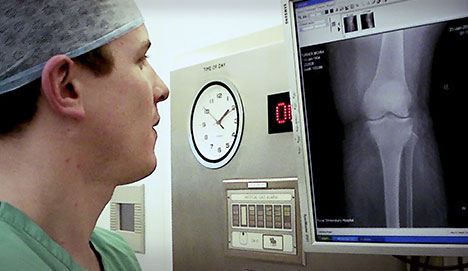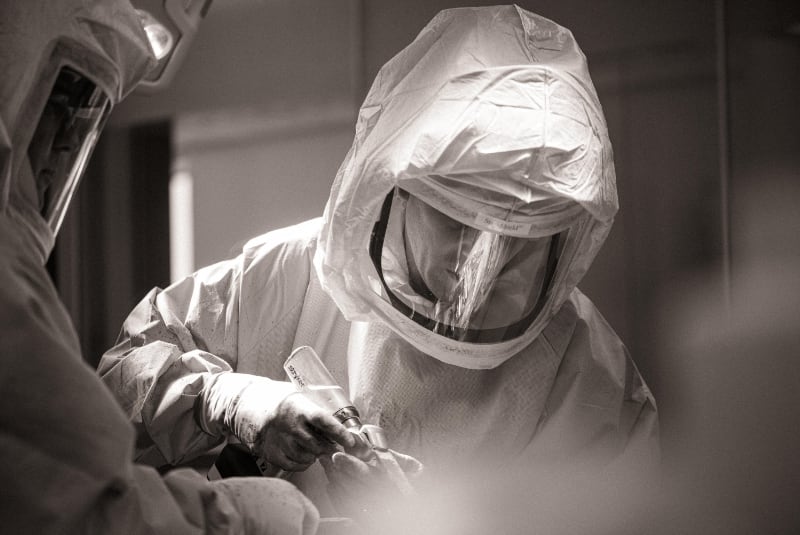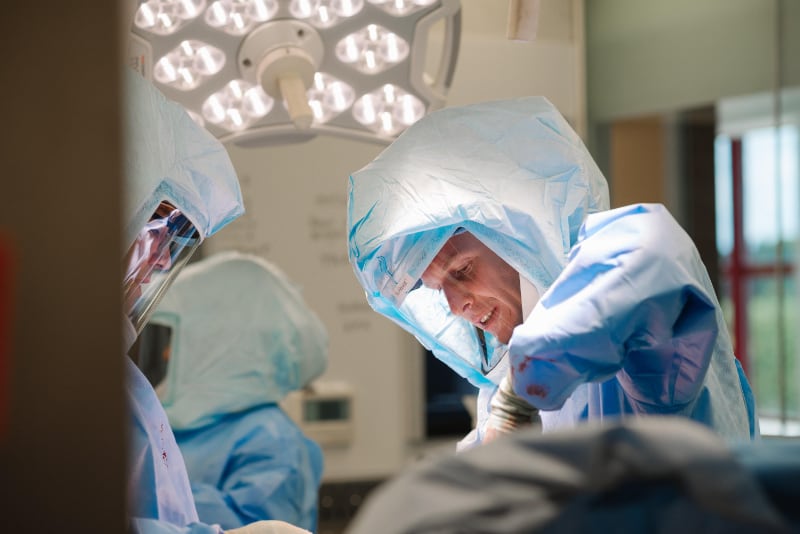Snapping Hamstrings
If you have further questions about snapping hamstrings then please feel free to contact us
here.
Alternatively you can book an appointment to see us below.




This is a rare condition but it may cause significant disability. The most common form is lateral, or biceps, snapping hamstrings. This is usually due to a presumed genetic or injured state where the direct arms of the long and short heads of the biceps no longer attach to the posterolateral aspect of the fibula. When these patients perform a deep squat, the biceps femoris tendon can roll over the fibular head. When getting up from the squat, the tendon will often “snap” back into position. Furthermore, these patients often complain of numbness and tingling in the lower leg because of the close proximity of the common peroneal nerve to the snapping biceps tendon.
While the causes differ between medial and lateral snapping hamstrings, the presenting symptoms are often similar.
Snapping medial hamstrings often present with similar findings. The “clunk” that is experienced going down into a deep squat and getting up can be quite dramatic and it can sometimes appear like the joint is subluxing. As with lateral biceps tendon snapping, the severity varies between patients, some having a persistent dramatic snap while others complain of this only occasionally. Approximately half of patients describe no preceding injury prior to the onset of symptoms while the other half develop the condition after surgery commonly after a hamstring ACL reconstruction, medial meniscus repair, or other type of surgery over the medial aspect of the knee which can cause scar tissue. The snapping is thought to be due to catching of the semitendinosus and/or gracilis tendons when they cross the semimembranosus tendon.
This is principally based on a history and examination.
On examination, patients commonly have pain on palpation of the biceps tendon attachment to the fibula. Performing a deep squat will often reproduce their symptoms. Sometimes, a patient can reproduce their medial knee snapping symptoms by placing all their weight on the affected side and trying to hyperextend their knee. Here the snapping may occur directly over the posteromedial knee. The examiner must position their fingers directly over the hamstring tendons to confirm that this is where the snapping occurs. In most cases, one can localize the snapping to the hamstrings within 5 to 6 cm of the posteromedial joint line.
A thin slice MRI to include the posterolateral knee structures should be performed to confirm that the biceps femoris attachment on the posterolateral aspect of the fibula is abnormal. Plain X-rays should also be performed to make sure there are no bony lumps (e.g osteochondroma) that could be confused with this condition.
MRI is less useful in diagnosing medial snapping hamstrings, however, it remains useful ruling out other pathology in this area of the knee which could present in a similar way, for example posterior horn meniscal tears and a large baker’s cyst.
The treatment for snapping biceps femoris tendons is reattachment of the biceps femoris back onto fibula. This usually involves the use of suture anchors.
The treatment of medial snapping hamstrings involves removing the cause of the snapping. Unfortunately, this is such a rare condition that a definitive treatment course has not been determined. In some patients, releasing the hamstring tendons (gracilis and semitendinosus) at their tibial attachment, followed by release of scar tissue surrounding the tendons proximally is very successful at treating the snapping symptoms. In other patients, a surgical excision of the snapping hamstring tendon(s) with an open hamstring harvester has also been performed. Unfortunately, recurrence of symptoms is quite common because hamstring tendons can regrow as quickly as 6-12 weeks after their excision
Ongoing studies are still being performed to determine the ideal treatment for this rare condition.
Following lateral snapping biceps repairs, patients are kept on crutches for 6 weeks to make sure that the soft tissue heals and then they slowly increase their activities. It usually takes 4 to 5 months to return back to full activities after this repair. Patients who have a medial snapping hamstring release or excision are often allowed to increase their activities as tolerated over the course of 6-8 weeks after surgery.